-
Research Paper

-
PotholeSAM: Pothole Management Using Segment Anything Model 2
PotholeSAM: Segment Anything Model 2를 이용한 포트홀 관리
-
Wonjun Choi, Seunguk Na, Yonghun Lee, Cheekyeong Kim, Seokjae Heo
최원준, 나승욱, 이용훈, 김치경, 허석재
- Potholes are closely related to road safety and can cause vehicle damage and accidents. Thus, prompt detection and repair are required. However, …
포트홀은 도로 안전과 밀접한 관련이 있으며 차량 손상 및 사고를 유발할 수 있어 신속한 발견과 보수가 필요하다. 그러나 기존의 포트홀 유지보수 방법은 …
- Potholes are closely related to road safety and can cause vehicle damage and accidents. Thus, prompt detection and repair are required. However, existing pothole maintenance methods are inefficient owing to labor shortages. Attempts have been made to streamline management through the use of artificial intelligence for pothole recognition, but these approaches have limitations because of difficulties in data collection and insufficient generalization performance. To address these problems, this paper proposes the PotholeSAM framework, which combines the object detection model YOLOv8, the object segmentation model SAM2, and a large language model (LLM). This framework consists of three stages: first, YOLOv8 detects the locations of potholes within images; second, SAM2 precisely segments the detected pothole areas; third, the LLM analyzes the brightness information of the segmented regions to estimate the depths of the potholes. The proposed method automatically analyzes information on the location, area, and depth of potholes, efficiently acquiring the data necessary for road management. This can alleviate labor shortages in local governments and enable proactive responses by detecting dangerous potholes early for drivers.
- COLLAPSE
포트홀은 도로 안전과 밀접한 관련이 있으며 차량 손상 및 사고를 유발할 수 있어 신속한 발견과 보수가 필요하다. 그러나 기존의 포트홀 유지보수 방법은 인력 부족으로 인해 효율적이지 못하다. 관리를 간소화하기 위해 인공지능을 활용한 포트홀 객체 인식이 시도되었지만, 데이터 수집의 어려움과 부족한 일반화 성능으로 이러한 접근법에도 한계가 있다. 이를 해결하기 위해, 본 연구에서는 객체 검출 모델 YOLOv8, 객체 분할 모델 SAM2, 그리고 대형 언어 모델 LLM을 결합한 PotholeSAM 프레임워크를 제안한다. 이 프레임워크는 세 단계로 구성된다; 첫째, YOLOv8을 사용하여 이미지 내 포트홀의 위치를 검출한다; 둘째, SAM2를 활용하여 검출된 포트홀 영역을 정밀하게 분할한다; 셋째, LLM이 분할된 영역의 밝기 정보를 분석하여 포트홀의 깊이를 추정한다. 제안된 방법은 포트홀의 위치, 면적, 깊이에 대한 정보를 자동으로 분석하여 도로 관리에 필요한 데이터를 효율적으로 획득할 수 있다. 이를 통해 지방 정부의 인력 부족을 완화하고 운전자에게 위험한 포트홀을 조기에 발견하여 선제적으로 대응할 수 있다.
-
PotholeSAM: Pothole Management Using Segment Anything Model 2
-
Research Paper
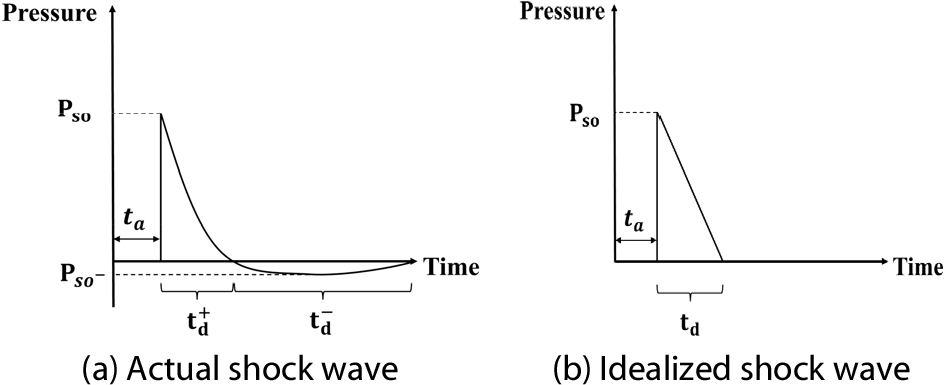
-
Nonlinear Dynamic Response of Reinforced Concrete Members Subjected to Axial and Blast Loads Using a Single Degree of Freedom System
단자유도 시스템을 이용한 축력과 폭발하중을 받는 철근콘크리트 부재의 비선형 동적 응답
-
Tae-Hun Lim, Seung-Hoon Lee, Han-Soo Kim
임태훈, 이승훈, 김한수
- In this study, a single-degree-of-freedom (SDOF) analysis for reinforced-concrete columns subjected to axial and blast loads was performed using the OpenSees program. …
본 논문에서는 OpenSees 프로그램을 사용하여 축력과 폭발하중을 받는 철근콘크리트 기둥의 SDOF 해석 절차를 제시하였다. 해석의 정확도를 검증하기 위해 저항함수 검증과 축력 및 …
- In this study, a single-degree-of-freedom (SDOF) analysis for reinforced-concrete columns subjected to axial and blast loads was performed using the OpenSees program. To verify the accuracy of the analysis, we validated and verified the resistance function of reinforced concrete columns subjected to axial and blast loads. Parametric studies of 192 variables were conducted, incorporating the reinforcement, cross-sectional, and axial load ratios as the parameters. The results indicated that neglecting axial loads could result in discrepancies of up to 50% in predicted displacements. Furthermore, ductility behavior based on a ductility ratio of 3 showed that columns with an axial load ratio below 30% exhibited ductile behavior, whereas those exceeding 30% demonstrated brittle behavior. This study developed an SDOF analysis procedure for reinforced-concrete members subjected to axial and blast loads and blast resistant design criteria based on the axial load ratio, offering useful tools for blast-resistant designs.
- COLLAPSE
본 논문에서는 OpenSees 프로그램을 사용하여 축력과 폭발하중을 받는 철근콘크리트 기둥의 SDOF 해석 절차를 제시하였다. 해석의 정확도를 검증하기 위해 저항함수 검증과 축력 및 폭발하중을 받는 철근콘크리트 기둥의 동적 거동을 비교하였다. 192개 단면에 대해 재료 강도, 철근비, 단면비, 축하중비를 주요 매개변수로 사용하여 매개변수 해석을 수행하였다. 축력을 고려하지 않을 경우 최대 변위에 있어서 최대 50%의 오차가 발생하였다. 연성비 3을 기준으로 축하중비 30% 미만에서는 연성 거동을, 30% 이상에서는 취성 거동을 보였다. 본 연구는 축력과 폭발하중을 받는 철근콘크리트 부재의 SDOF 해석 절차를 개발하고, 축하중비에 따른 내폭 설계 기준을 제시함으로써 내폭 설계에 널리 활용될 수 있다.
-
Nonlinear Dynamic Response of Reinforced Concrete Members Subjected to Axial and Blast Loads Using a Single Degree of Freedom System
-
Research Paper

-
EIS-based Multiphysics Computational Model for Predicting Battery Performance
배터리 성능 예측을 위한 EIS 기반 멀티피직스 전산해석 모델 개발
-
Jungeun Byun, Juae Oh, Seongmin Chang
변정은, 오주애, 장성민
- As environmental problems continue, the demand for electric vehicles is increasing. Thus, waste battery processing technology has attracted interest. The importance of …
환경 문제가 대두되면서 전기자동차에 대한 수요가 증가하게 되고, 이에 따라 폐배터리 처리 기술이 각광받고 있다. 폐배터리를 재활용하는 대신 재사용하기 위해서는 배터리 성능 …
- As environmental problems continue, the demand for electric vehicles is increasing. Thus, waste battery processing technology has attracted interest. The importance of battery-performance verification technology is also increasing to achieve the reuse of batteries rather than recycling them. For this technology, we focus on reducing the time and increasing the accuracy simultaneously. We aim to obtain a battery discharge voltage graph and predict the performance of the battery by utilizing battery electrochemical spectroscopy through multiphysics analysis. In this paper, we propose a technique to control the battery discharge characteristics by utilizing impedance matching and obtain a discharge graph. In the proposed technique, voltage curve datum are extracted by measuring only the impedance for a short time without actually fully charging and discharging the battery. To verify this, we matched of actual and analysis data and performed additional verification. This approach can be applied to predicting and optimizing battery performance, and we expect it to contribute to the design and operation optimization of energy storage systems in the future.
- COLLAPSE
환경 문제가 대두되면서 전기자동차에 대한 수요가 증가하게 되고, 이에 따라 폐배터리 처리 기술이 각광받고 있다. 폐배터리를 재활용하는 대신 재사용하기 위해서는 배터리 성능 검증 기술의 중요성도 커지고 있다. 배터리 성능 검증 기술은 시간을 단축하는 동시에 정확도를 높이는 데 집중해야 한다. 본 논문에서는 배터리 전기화학 분광법을 활용해 배터리 방전 전압 그래프를 얻고 배터리 성능을 예측하는 다중물리 분석을 활용하고자 한다. 본 논문에서는 임피던스 매칭 기법을 활용해 배터리 방전 특성을 제어하고 이를 통해 방전 그래프를 얻는 기법을 제안한다. 제안하는 기법에서는 배터리를 실제로 완전 충전 및 방전하지 않고 단시간 동안 임피던스만 측정해 전압 곡선 데이터를 추출한다. 이를 검증하기 위해 실제 데이터와 분석 데이터의 매칭을 수행했다. 이러한 접근 방식은 배터리 성능을 예측하고 최적화하는 데 적용될 수 있으며, 향후 에너지 저장 시스템의 설계 및 운영 최적화에 기여할 것으로 기대된다.
-
EIS-based Multiphysics Computational Model for Predicting Battery Performance
-
Research Paper
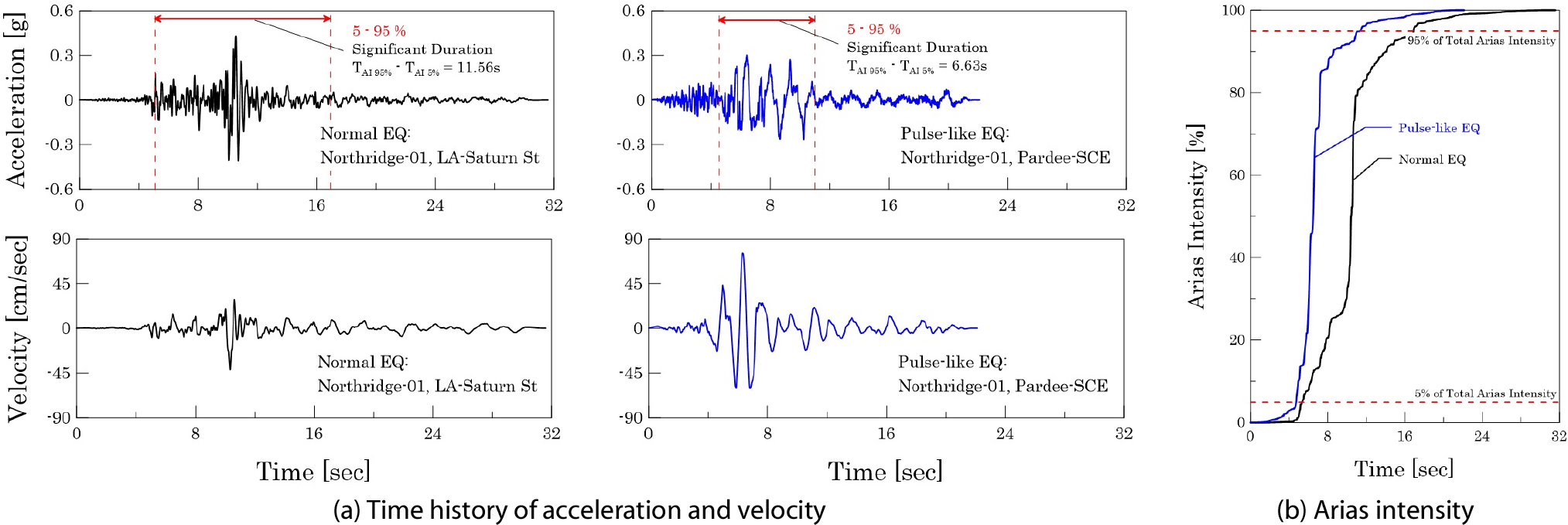
-
Effect of Pulse Period on the Seismic Fragility of Bridges Subjected to Pulse-like Ground Motions
펄스형 지반운동을 받는 교량의 지진취약도에 대한 펄스주기의 영향
-
Yeeun Kim, Sina Kong, Jiho Moon, Jong-Keol Song
김예은, 꽁씨나, 문지호, 송종걸
- Pulse-like ground motions are known to cause greater damage to structures than non-pulse-like ground motions. The pulse period can be evaluated by …
펄스형 지진이 비펄스형 지진보다 구조물에 보다 큰 손상을 유발하는 것으로 알려져 있다. 펄스형 지진으로부터 속도펄스를 추출하면 펄스주기를 평가할 수 있는데, 55개의 펄스형 …
- Pulse-like ground motions are known to cause greater damage to structures than non-pulse-like ground motions. The pulse period can be evaluated by extracting velocity pulses from pulse-like ground motions. In this study, 55 pulse-like ground motions were selected to evaluate the pulse period and divided into three groups according to the pulse period. The average response spectra for acceleration, velocity, and displacement for three earthquake groups with different pulse periods were compared. We observed that the pulse period and response spectra in the periodic domain corresponding to the pulse period were closely related. To analyze the effect of the pulse period of pulse-like ground motions on the seismic fragility of bridges, we created three bridge models with natural periods similar to the pulse periods of three earthquake groups and analyzed the seismic fragility. The more similar the natural period of the bridge and pulse period of the pulse-like ground motion, the greater the seismic fragility of the bridge increases. In other words, as the similarity between the two periods increases, the inelastic response of the bridge increases, and the structural damage resulting from this increases significantly.
- COLLAPSE
펄스형 지진이 비펄스형 지진보다 구조물에 보다 큰 손상을 유발하는 것으로 알려져 있다. 펄스형 지진으로부터 속도펄스를 추출하면 펄스주기를 평가할 수 있는데, 55개의 펄스형 지진기록을 선정하여 펄스 주기를 평가하고 펄스 주기에 따라서 세 그룹으로 구분하였다. 펄스 주기를 달리하는 따른 세 개의 지진그룹에 대하여 가속도, 속도, 변위에 대한 평균 응답스펙트럼을 비교한 결과, 펄스 주기와 펄스주기에 대응하는 주기영역에서의 응답스펙트럼은 밀접한 연관성이 있음을 알 수 있었다. 펄스형 지진의 펄스주기가 교량의 지진취약도에 미치는 영향을 분석하기 위하여, 세 가지 지진그룹의 펄스주기와 유사한 고유주기를 가지는 세 가지 교량모델을 작성하여 지진취약도 해석을 수행하였다. 교량의 고유 주기와 펄스형 지진의 펄스 주기가 서로 유사할수록, 교량의지진취약도가 증가함을 알 수 있다. 즉, 두 주기 간의 유사성이 증가할수록, 교량의 비탄성 응답이 증가하며 이에 따른 구조적 손상이 크게 증가한다고 할 수 있다.
-
Effect of Pulse Period on the Seismic Fragility of Bridges Subjected to Pulse-like Ground Motions
-
Research Paper
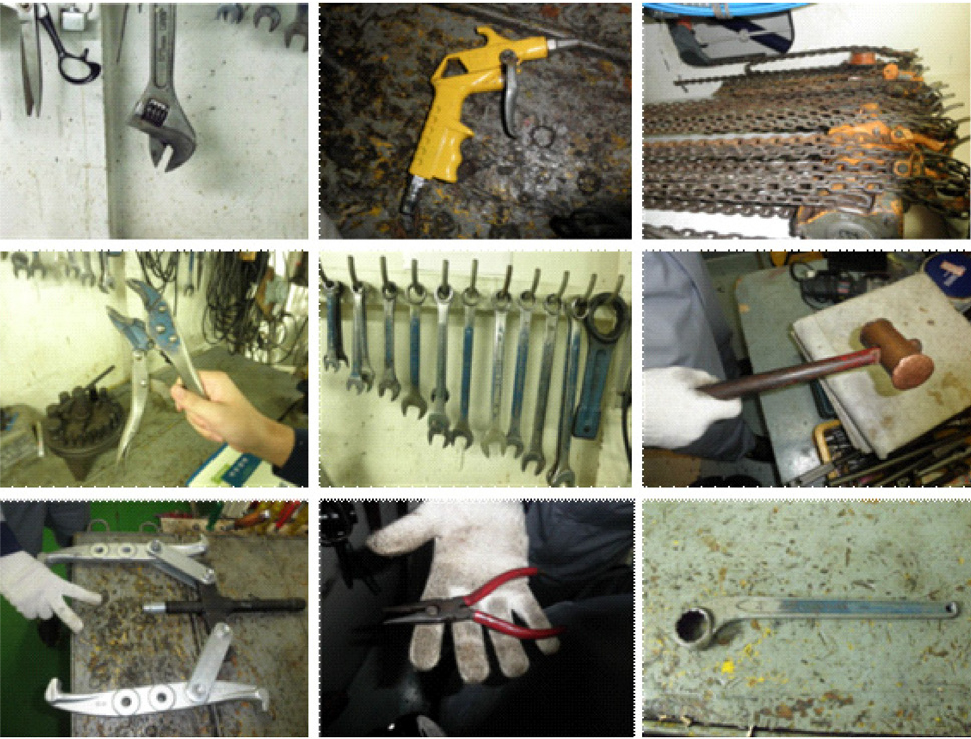
-
Authoring Tool for Animating Augmented-Reality 3D Models for Ship Maintenance Based on a Neutral Format
중립 포맷 기반 선박 유지보수에 활용하기 위한 증강현실 3D 모델의 정비 애니메이션 저작도구
-
Youngsu Kim, Kyungho Lee, Luke (Yang-Ouk) Kim, Youngsoo Han
김영수, 이경호, 김양욱, 한영수
- Recently, with the advent of the fourth industrial revolution, interest in autonomous ships is increasing owing to technological advancements. Future ships are …
최근 4차 산업 혁명의 도래와 함께 기술의 발전에 따라 자율운항 선박에 대한 관심이 높아지고 있다. 미래의 선박은 고기량 선원들의 육상 근무 선호도 …
- Recently, with the advent of the fourth industrial revolution, interest in autonomous ships is increasing owing to technological advancements. Future ships are expected to gradually have lower-skilled crews because of the increasing preference for land-based work by high-capacity crews and the limitation of the number of crew members on board. Therefore, an augmented reality-based remote maintenance system is required not only to control movement and steer a ship for safe operation but also for the smooth maintenance of autonomous ships. The development of such a system is currently in progress. In an augmented reality-based remote maintenance system, visualizing only 3D models has low usability. In addition, the development of animations highly depends on the development platform, which reduces compatibility and usability. Hence, an authoring tool that can easily create maintenance animations is required. In this study, to solve these problems, we developed an authoring tool for lightweight and highly compatible maintenance animations by creating a neutral format for maintenance animations in the form of a JSON file. In addition, we verified usability by developing a prototype and verified compatibility with other platforms. Finally, we verified the validity of the proposed authoring tool through comparison with software that can create animations.
- COLLAPSE
최근 4차 산업 혁명의 도래와 함께 기술의 발전에 따라 자율운항 선박에 대한 관심이 높아지고 있다. 미래의 선박은 고기량 선원들의 육상 근무 선호도 증가와 승선 인원 제한으로 인해 점차적으로 낮은 기량의 선원들이 승선하며 선원 수가 감소될 전망이다. 따라서 선박의 안전 운항을 위한 운동 및 조종의 제어뿐만 아니라 자율운항 선박의 원활한 유지보수를 위해 증강현실 기반의 원격 유지보수 시스템이 필요하며 현재 개발이 활발히 진행 중이다. 증강현실 기반 원격 유지보수 시스템에서는 3D모델만 가시화하는 것은 활용성이 떨어진다. 또한, 애니메이션을 개발하는 것은 개발 플랫폼에 대한 의존도가 높기 때문에 호환성 및 활용성이 떨어진다. 이러한 문제를 해결하기 위해 손쉽게 정비 애니메이션을 만들 수 있는 저작도구가 필요하다. 따라서, 본 연구에서는 이러한 문제를 해결하기 위해 Json 파일 형식으로 정비 애니메이션 중립 포맷을 만들어 경량화 및 호환성 높은 정비 애니메이션을 위한 저작도구를 개발하였다. 또한, 프로토타입을 개발하여 활용성을 검증하였고, 다른 플랫폼과의 호환성 검증을 진행하였다. 마지막으로, 애니메이션을 제작할 수 있는 소프트웨어와의 비교를 통해 제안한 저작도구의 유효성을 입증하였다.
-
Authoring Tool for Animating Augmented-Reality 3D Models for Ship Maintenance Based on a Neutral Format
-
Research Paper
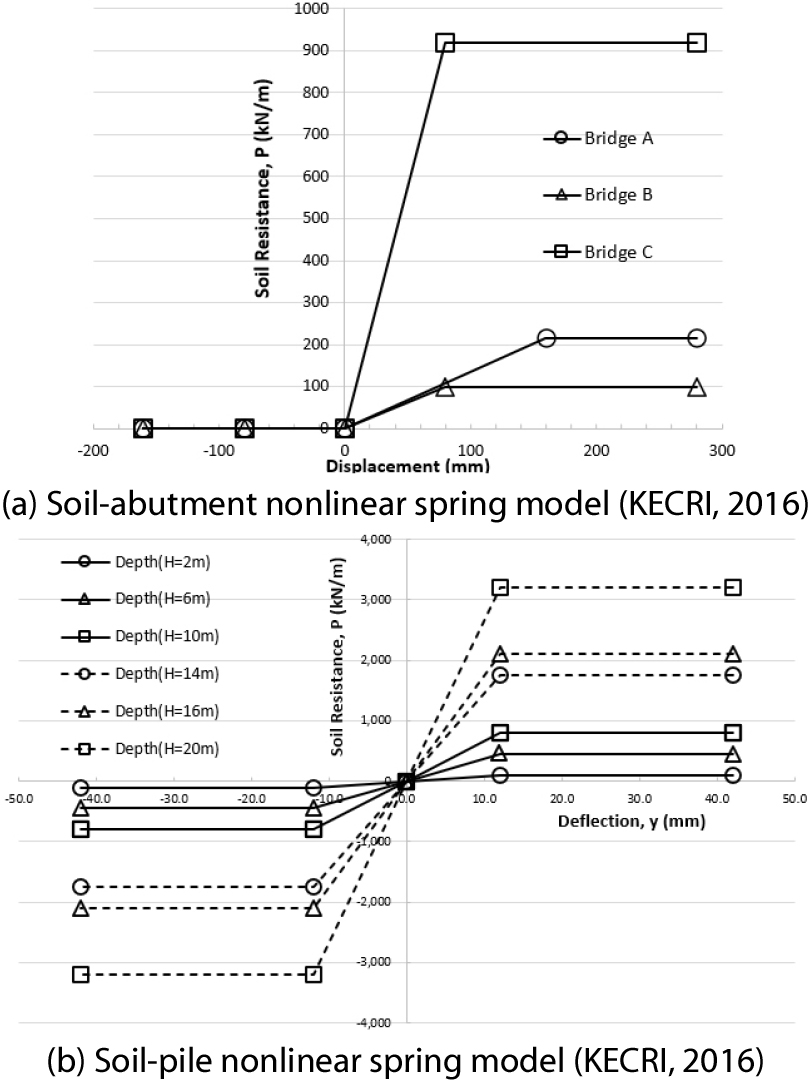
-
Long-term Measurements of Integral Abutment Bridges to Verify the Stability of Structural Behavior and Applicability of a Numerical Analysis Model
장기 계측을 통한 일체식 교대 교량의 구조 거동 안정성과 수치 해석 모델의 적용성 검증
-
Seung-Won Kim, Chi-Oug Noh, Jae-Un Kim, Chan-Ho Lee, Hwan-Woo Lee
김승원, 노치욱, 김재언, 이찬호, 이환우
- Integral abutment bridges have been applied in the United States and Canada since the 1930s. However, in Korea, their service period has …
일체식 교대 교량 공법은 1930년대부터 미국과 캐나다에서 적용되었으나, 국내에서는 공용 기간이 짧아 설계, 시공 및 유지관리 경험이 부족하다. 또한, 장기 거동에 대한 …
- Integral abutment bridges have been applied in the United States and Canada since the 1930s. However, in Korea, their service period has been relatively short, resulting in a lack of experience in design, construction, and maintenance. Additionally, owing to the absence of long-term measurement data, the stability of the predicted structural behavior should be verified during the design phase. This study conducted long-term measurements on in-service integral abutment bridges in Korea and applied a numerical analysis model proposed in a previous paper to verify the structural stability and applicability of the model. The displacement magnitude and pattern changes owing to seasonal temperature variations were qualitatively evaluated, and a quantitative validation was performed by comparing the measured and predicted displacement values using a t-test. The analysis results showed that the target bridges exhibited stable structural behavior with minimal deviation between predicted and measured values. However, in some bridges, the contraction of expansion joints and contact between abutment walls and girders due to abutment creeping were observed. To improve modeling accuracy, we incorporated higher values for the soil-abutment spring stiffness and bearing shear stiffness than that suggested by the design specifications.
- COLLAPSE
일체식 교대 교량 공법은 1930년대부터 미국과 캐나다에서 적용되었으나, 국내에서는 공용 기간이 짧아 설계, 시공 및 유지관리 경험이 부족하다. 또한, 장기 거동에 대한 추적 데이터가 부족해 설계 시 예측한 구조 거동의 안정성 검증이 필요하다. 본 연구는 국내 공용 중인 일체식 교대 교량을 대상으로 장기 계측을 수행하고, 선행 연구에서 제안된 수치 해석 모델을 적용해 구조 안정성과 모델의 적용성을 검증하였다. 계절적 온도 변화에 따른 변위 값의 크기와 변화 형상을 정성적으로 평가하고, 실측과 수치 해석 변위 값을 t 검정으로 비교해 정량적 검증을 수행하였다. 분석 결과, 대상 교량들은 예측 값과 실측 값이 큰 오차 없이 안정적인 구조 거동을 보였다. 일부 교량에서는 교대 밀림으로 인한 신축 이음 축소와 교대 벽체 및 거더부 협착이 관찰되었다. 모델링 정확도를 높이기 위해 지반-교대 스프링 강성과 교좌 전단 강성을 설계 값보다 높게 반영하는 것이 필요하다.
-
Long-term Measurements of Integral Abutment Bridges to Verify the Stability of Structural Behavior and Applicability of a Numerical Analysis Model
-
Research Paper

-
Computational Numerical Prediction for Afterburning Blast Pressure Depending on Internal Explosion Locations in a Long Tunnel
전산해석을 이용한 장대 터널 내부 폭발 위치변화에 따른 재연소 폭압 특성 변화 추정
-
Hun Ji, WooSeok Kim
지훈, 김우석
- When analyzing the explosion of TNT (Trinitrotoluene) or similar explosives inside a long tunnel, the phenomenon of afterburning should be considered. The …
길이가 긴 터널 내부에서 TNT와 같은 화약의 폭발을 해석할 때, 재연소 현상을 고려하는 것이 매우 중요하다. 재연소 현상을 해석에 반영하기 위해서는 재연소 …
- When analyzing the explosion of TNT (Trinitrotoluene) or similar explosives inside a long tunnel, the phenomenon of afterburning should be considered. The afterburning energy and duration must be appropriately applied to incorporate afterburning into the analysis. In this study, analysis conditions were validated through shock tube experiments conducted using a structure similar to a tunnel. Based on these validated conditions, the afterburning duration trends were analyzed with respect to changes in the explosion location along the tunnel's length. Furthermore, the results were applied to explosion analyses to examine the variations in internal overpressure and impulse within the tunnel. The analysis was performed using a modeled tunnel with a square cross-section, having an entrance area of 0.785 m2. The results revealed that the afterburning duration increases steadily as the explosion location moves deeper into the tunnel, eventually converging at a certain point. Additionally, the explosion analysis incorporating the increasing afterburning duration indicated that the maximum internal overpressure increases with the inward movement of the explosion location but ceases to increase beyond a specific point.
- COLLAPSE
길이가 긴 터널 내부에서 TNT와 같은 화약의 폭발을 해석할 때, 재연소 현상을 고려하는 것이 매우 중요하다. 재연소 현상을 해석에 반영하기 위해서는 재연소 에너지와 지속 시간을 적절히 적용해야 한다. 본 연구에서는 터널과 유사한 구조인 충격파관 실험을 통해 해석 조건을 검증한 뒤, 이를 바탕으로 터널 입구로부터 내부 폭발 위치 변화에 따른 재연소 지속 시간의 경향을 분석하였다. 또한, 이 결과를 폭발 해석에 적용하여 터널 내부 폭압과 충격량의 변화를 분석하였다. 해석은 입구 면적이 0.785m2인 정사각형 단면의 터널을 모델링하여 수행되었다. 분석 결과, 터널 내부 폭발 위치가 입구에서 깊어질수록 재연소 지속 시간은 일정하게 증가하며 특정 지점에서 수렴하는 경향을 보였다. 또한, 재연소 지속 시간 증가를 반영한 폭발 해석 결과, 터널 내부 최대 폭압은 폭발 위치가 내부로 이동함에 따라 증가하다가 특정 폭발 위치 이후로는 더 이상 증가하지 않았다.
-
Computational Numerical Prediction for Afterburning Blast Pressure Depending on Internal Explosion Locations in a Long Tunnel
-
Research Paper
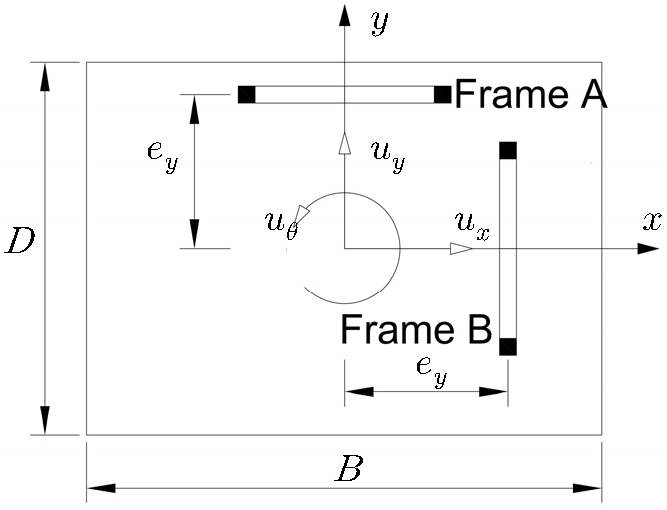
-
Effect of Belt Trusses on Wind Response in Frame-Shear Wall Buildings
골조-전단벽 건물의 벨트트러스가 풍응답에 미치는 영향
-
Ju-Won Kim
김주원
- In this study, wind loads in the along-wind and across-wind directions were generated using the KDS 2022 spectrum to investigate the behavior …
본 연구에서는 피난안전구역이 한 개 층 설치된 준초고층 골조-전단벽 건물의 풍하중에 대한 거동을 파악하기 위하여 KDS2022의 스펙트럼을 이용하여 풍방향 및 풍직각방향 풍하중을 …
- In this study, wind loads in the along-wind and across-wind directions were generated using the KDS 2022 spectrum to investigate the behavior of a framed-shear wall structure of a quasi-high-rise building with a refuge safety zone installed on a single floor. The generated wind loads were used to conduct a dynamic analysis of the framed-shear wall building with a belt truss installed on an arbitrary floor to analyze its dynamic response to wind loads. In the paper, the values of dynamic response to considering the effect of the core position and belt truss.
- COLLAPSE
본 연구에서는 피난안전구역이 한 개 층 설치된 준초고층 골조-전단벽 건물의 풍하중에 대한 거동을 파악하기 위하여 KDS2022의 스펙트럼을 이용하여 풍방향 및 풍직각방향 풍하중을 생성하고, 생성한 풍하중을 적용하여 임의의 층에 벨트 트러스가 설치된 골조-전단벽 건물의 동적 해석을 실시하여 풍하중에 대한 동적 거동을 분석한다. 코어의 위치에 따른 편심과 벨트 트러스가 동적 응답에 미치는 영향을 평가하고자 한다.
-
Effect of Belt Trusses on Wind Response in Frame-Shear Wall Buildings
Journal Informaiton
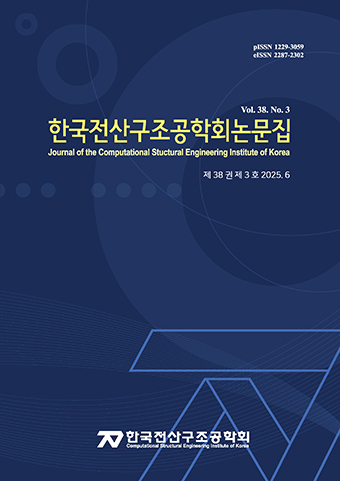 Journal of the Computational Structural Engineering Institute of Korea
Journal of the Computational Structural Engineering Institute of Korea
Journal Informaiton
Journal Informaiton - close
 Journal of the Computational Structural Engineering Institute of Korea
Journal of the Computational Structural Engineering Institute of Korea











